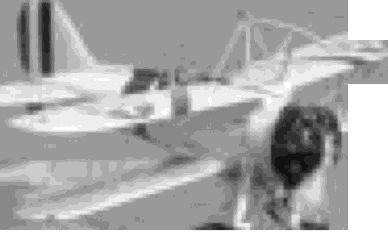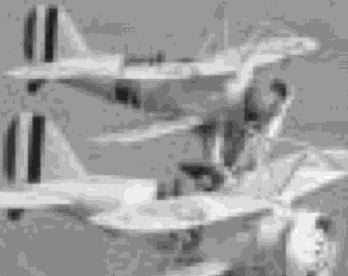

86
UNITED STATES NAVAL AVIATION
1910-1995
1933-Contin ued
20 November
Lieutenant Commander Thomas G.
W. Settle and Major Chester 1. Fordney, USMC, flying a
600,000 cubic foot free balloon, set a world's altitude
record of 6 I ,237 feet in a flight into the stratosphere
with departure from Akron, Ohio, and landing near
Bridgeton, N.J.
20 December
To effect the organization of the avia-
tion element of the newly formed Fleet Marine Force,
Aircraft Squadrons East Coast Expeditionary Forces
was redesignated Aircraft One, Fleet Marine Force, and
Aircraft Squadrons West Coast Expeditionary Forces
became Aircraft Two, Fleet Marine Force.
1934
10-11 January
Six Consolidated P2Y-l s of Patrol
Squadron 10F, Lieutenant Commander Knefler
McGinnis commanding, made a nonstop formation
flight from San Francisco, Calif., to Pearl Harbor, TH.,
in 24 hours 35 minutes, thereby bettering the best pre-
vious time for the crossing, exceeding the best dis-
tance of previous mass flights, and breaking a nine-
day-old world record for distance in a straight line for
Class C seaplanes with a new mark of 2,399 miles.
P2Y-ls of Patrol Squadron IO-F made first non-stop formation flight
from San Francisco to Pearl Harbor
426937
14 March
Dr. A. Hoyt Taylor, head of the Radio
Division of the Naval Research Laboratory, authorized
a project for development of pulse radar (as it was
later called) to detect ships and aircraft. The basic con-
cept, which had been proposed by Leo C. Young,
involved special sending, receiving and display equip-
ment all mounted in close proximity. This equipment
would send out pulses of radio energy of a few
microseconds in duration separated by time intervals
that were tens to thousands of times longer than the
duration of a pulse. Reception of an echo would indi-
cate a target; time of travel to the target and back, the
distance; and directional sending or receiving antenna,
the bearing. As compared to the beat in a continuous
radio wave, a technique which had been under devel-
opment at the Naval Research Laboratory for nearly
four years, the pulse technique promised to be of
much greater utility because it would provide range
and bearing as well as detection and because the
entire apparatus could be installed aboard a single
ship. The feasibility of the pulse technique was based
upon new developments of the radio industry includ-
ing the cathode ray tube, high power transmitting
tubes and special receiving tubes.
27 March
An act of Congress, approved by the pres-
ident and popularly known as the Vinson-Trammell
Act, established the composition of the Navy at the
limit prescribed by the Washington and London Naval
Treaties. The act authorized construction of a number
of ships, including one aircraft carrier of about 15,000
tons, and in other matters relating to aviation autho-
rized the president to procure naval aircraft for ships
and naval purposes in numbers commensurate with a
treaty Navy. It also provided that not less than 10 per-
cent of the authorized aircraft and engines be manu-
factured in government plants. Under the authoriza-
tion,
Wasp
was laid down in 1936.
28 April
The equipment and techniques of along-
side recovery by plane net had developed to the point
that Commander, Cruisers Battle Force, issued a direc-
tive describing the method that would be used by all
ships of his command. The success of the method was
such that the only plane trap in use, that on
Maryland
(BB 46) was removed in June and underway recovery
of seaplanes by battleships and cruisers soon became
routine.
1 May
Lieutenant Frank Akers made a hooded land-
ing in an OJ-2 at College Park, Md., in the first
demonstration of the blind landing system intended
for carrier use and under development by the
Washington Institute of Technology. In subsequent
flights, Lieutenant Akers took off from Anacostia,
D.C., under a hood and landed at College Park, Md.,
without assistance.
22 May
The NS-l, a single-engine biplane trainer,
was ordered from Stearman Aircraft Company,
Wichita, Kans.
4 June
Ranger
was commissioned at Norfolk, Va.,
Captain Arthur 1. Bristol commanding.
21 June
First landings and takeoffs were made
aboard
Ranger
by the ship's aviators led by Lieutenant
Commander Arthur C. Davis. After completing normal
 |
10 |
 |